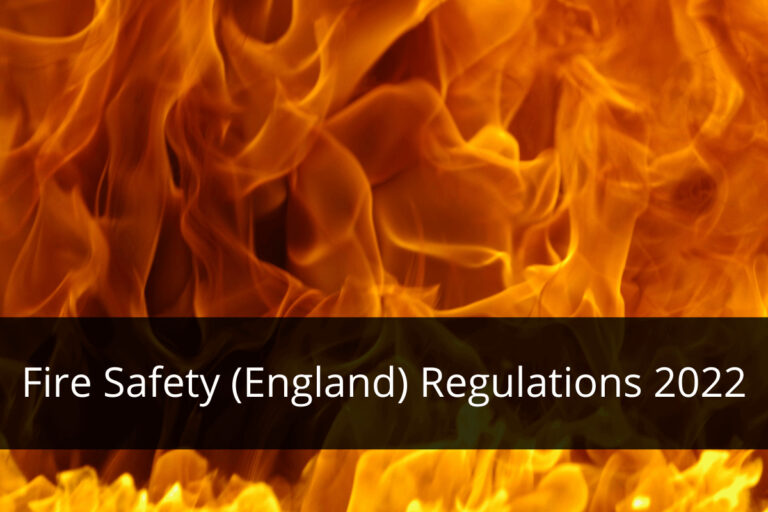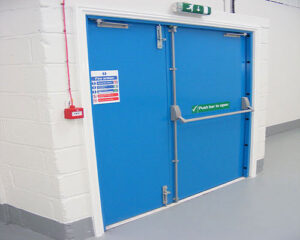
Responsibility under Building Safety Act
Almost a third of those responsible for fire doors do not understand fire door responsibility under Building Safety Act
From The BWF Fire Door Alliance
The BWF Fire Door Alliance reveals new research into the understanding of fire door third-party certification as new building safety legislation comes into force
Nearly a third (30%) of those responsible for fire door safety say they do not fully understand their responsibilities under the Building Safety Act*, one of the UK’s leading authorities on fire door safety and third-party certification has revealed.
The British Woodworking Federation (BWF) Fire Door Alliance’s survey of 1,000 people with responsibility for fire door specification, installation, and maintenance across the UK identified a lack of understanding of fire safety-related responsibilities under the new legislation. Almost one in ten (8%) were unaware how new laws will affect how fire doors are specified.
However, in signs of a an early positive effect of new legislation, more than half of respondents said they would now ask for more information on product traceability and seek more proof of performance.
Helen Hewitt, Chief Executive of the BWF Fire Door Alliance, said: “Our findings clearly show that while the new legislation appears to have had a positive initial impact, there is still some work to be done in disseminating the detail, and building an understanding of how compliance with the law can be met. This must be made an urgent priority for all those responsible for fire safety.”
Growing awareness of fire door certification, but still work to do
The research, published in a new report as part of the BWF Fire Door Alliance’s Be Certain, Be Certified campaign explored understanding and attitudes towards third-party certification of fire doors, which can assist those responsible for a building’s fire safety to fulfil their legal obligations and offer robust proof of a fire door’s performance.
While, encouragingly, more than half (55%) of fire doors that respondents had responsibility for are third-party certified, 80% said that end clients, such as building owners and managers, do not require third-party certification.
Helen Hewitt said: “Third-party certification provides robust proof of performance and traceability of a fire door’s components, its manufacture and journey through the supply chain. Despite this, there is still no mandatory requirement under Building Regulations for the use of third-party certified fire doors, despite the essential role fire doors play in protecting building occupants from the spread of smoke and fire.
“Our latest report, which we’re proud to launch as part of our our Be Certain, Be Certified campaign, calls for those ultimately responsible for building fire safety to specify third-party certified fire doors as a requirement throughout all UK buildings. Not only will this raise the standard of fire door safety but crucially, it will help protect lives.”
Among those who do specify or use third-party certified fire doors, the primary reason for doing so is to meet and comply with fire safety legislation (47%). 40% said that the reason was to provide traceability of fire door components, manufacture and journey through the supply chain – highlighting a strong awareness of the benefits of third-party certification.
However the research also highlighted major barriers to the adoption of third-party certified fire doors. Over a third (35%) cite cost as the primary reason, while 33% reported a lack of end client demand.
Certification delivers all-important traceability While end clients typically don’t insist on certification, the overwhelming majority (88%) of respondents agree that the traceability of a complete fire door assembly is important to the organisations they’re working on behalf of. However, less than a third (28%) said they will go as far as to specify third-party certified fire doors to meet their obligations.
Helen adds, “Clearly there is not a price that can be put on safety or protecting the lives of building users, particularly those where people sleep or that house vulnerable occupants.”
Link to the articleUnlock the true value of our services with our affordable pricing options!
| Item | Price |
|---|---|
| 1-5 Doors | £99 |
| 5-10 Doors | 199 |
| Aditional Door | £17/hour |
| Fire Door Maintenance | Request a quote |
| Item | Price |
|---|---|
| External Fire Doors | Request a quote |
| Glazed Fire Doors | Request a quote |
| Fire Rated Door Finishes | Request a quote |
| Item | Price |
|---|---|
| 1-5 Doors | £99 |
| 5-10 Doors | 199 |
| Aditional Door | £17/hour |
| Fire Door Maintenance | Request a quote |
Customer reviews
Frequently asked questions:
Our 30 minute fire doors (FD30) are 44mm thick
Our 60 minute fire doors (FD60) are 54mm thick
The amount that can be removed from the edges of a fire door differs from one door to the next and depends on several factors, including the exact materials used during construction and guidelines from the fire rating certificate. Accurate trimming information can only be provided by the manufacturer on a case-by-case basis after the door has been completed.
There are no set rules that detail how long a fire door lasts before it needs to be replaced. The condition of the door should be monitored and checked at least every 6 months to ensure it is in good working order. Fire doors should comply with the latest fire door regulations and so it is important to keep up to date with any changes in regulations which may mean your doors are no longer fit for purpose.
All our fire doors satisfy the DDA regulations.
In order to calculate the weight of a fire door you will need to know the weight per square meter (kg/m2) of the doors core. This is determined using the thickness of the door as follows: 44mm = 55kg 54mm = 75kg The calculation below can be used to determine the approximate weight of the fire door. Please note that the calculation does not take glass weight into account. Width X height X thickness X kg/m2 of the door’s core = Weight of fire door. For example for a door that was 926x2040mm with a thickness of 44mm the following calculation would give an approximate weight: 0.926 X 2.040 X 0.44 X 55 = 45 KG.









